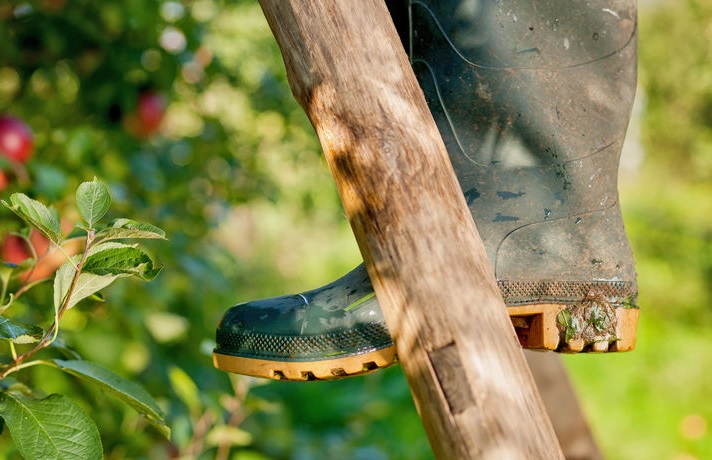
A renewed focus has been called to tackle the number of preventable deaths and injuries as a result of working at height.
Over the last 35 years the farming industry has demonstrated a fatal injury rate of around 20 times the average, with falls from height the third most common cause of death.
It comes as the Health and Safety Executive (HSE) is due to publish its latest 2019/20 Business Plan, detailing how upcoming annual priorities will support its mission ‘to prevent death, injury and ill health in Britain’s workplaces’.
In anticipation of the plan’s publication, health and safety company Heightsafe is calling for the farming industry to tackle the number of preventable deaths and injuries as a result of working at height.
From 2013-18, falls from height accounted for the majority of fatal injuries to workers - at an average of 37 deaths every year. It is a major cause of death in both construction and agriculture.
Last month the All-Party Parliamentary Group (APPG)’s report on Working at Heights put forward recommendations to highlight the risks, regulations and best-practices to a variety of industries, demonstrating the need to improve knowledge and preventative action across the UK workforce.
Ken Diable, Managing Director at Heightsafe, said: “Workers in construction and agriculture are risking their lives just by going to work, which is completely unacceptable.”
“More focus must be made on helping employers in these sectors provide safe working environments, and educating workers on good practice.
“Reaching these audiences is notoriously tough, and that’s where HSE could work more closely with suppliers, charities and unions to come up with creative solutions.”
A fall can lead to long term injuries and make it difficult to keep on farming. Most falls from height accidents occur either because the work is not properly planned, the risks are not recognised, proper precautions are not taken, or the equipment used is either defective, not appropriate, or used incorrectly.
'Stepped backwards'
In 2015, a young Yorkshire farmer was carrying out routine maintenance on a length of guttering on the family farm when he fell eighteen feet through a roof light onto the concrete floor below him.
Twenty-year-old Peter Rooke was in great pain as he had broken the femur in his left leg. He was airlifted to hospital where surgeons pinned the leg with a steel rod. He was unable to return to work for eight weeks.
His father Mark was working with him on the roof. He said: “It is a job I have done for the past 30 years and whenever I was working on the roof there was a farm worker below so I was not alone.
“The gutter cleaning is an annual job which we have to do to ensure that there is no water leakage when grain is stored in the building below.
“It was a fine day but heavy rain was threatening so there was some pressure to get the job done before the weather changed. I told Peter about the dangers before we went up there together and to be very careful.”
Mark added: “We had only been working up there for about ten minutes when the incident occurred. Peter had stepped backwards from the safety boards onto the roof which gave way and crashed straight through to the floor below.
“He cannot explain how or why he had stepped backwards and it must have been a lapse in concentration.”
Since the accident Mark has had a safety harness and a back rail fitted to the roof so that anyone working at height there is securely held.
Rick said the accident reinforces that fact that farm workers of any age run the risk of injury or death from falls.
